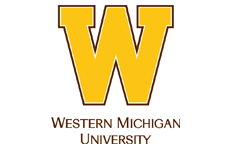ScholarWorks > WMU > Perspectives > Vol. 1 (1969) > No. 3
Abstract
Panel 2 presented at the Association for General and Liberal Studies' Annual Meeting at Colgate University, October 30th through November 1st, 1969.
The elements of such a curriculum for man can be derived from the evidence of early childhood. Manual dexterity, social interaction, esthetic response, and linguistic capacity constitute four sources of spontaneous gratification in early life. If the student were taken as the integrating center of a curriculum composed of successively more complex forms of these four elements, permitting his own inductive capacities to lead him on from one level to the next, a form of education would emerge which might be said to be uniquely human. What is envisaged here is the spontaneous generation of activities facilitating the ultimate growth of which man is capable, rather than the continued fitting of humans to the limited categories of their predecessors. This is the form which education must take in the new social era that lies ahead.
We feel that the components of a liberal education are students interacting with faculty, within a curriculum at a physical locale. The underlying foundation of such an education rests on individual responsibility and a definition of liberal education as an exploration into what man can know and do. Administrators and faculty must concern themselves with these environmental components in order to increase potential for participants to carry on their own education.
Recommended Citation
Stern, George G.; Lago, Daniel; and Johnson, Samuel D.
(1970)
"Environmental Components of Liberal Education,"
Perspectives (1969-1979): Vol. 1:
No.
3, Article 4.
Available at:
https://scholarworks.wmich.edu/perspectives/vol1/iss3/4



